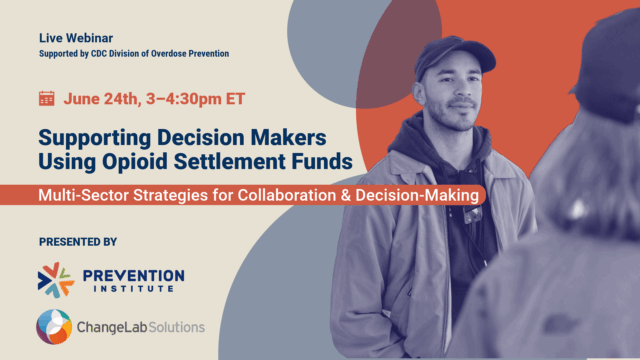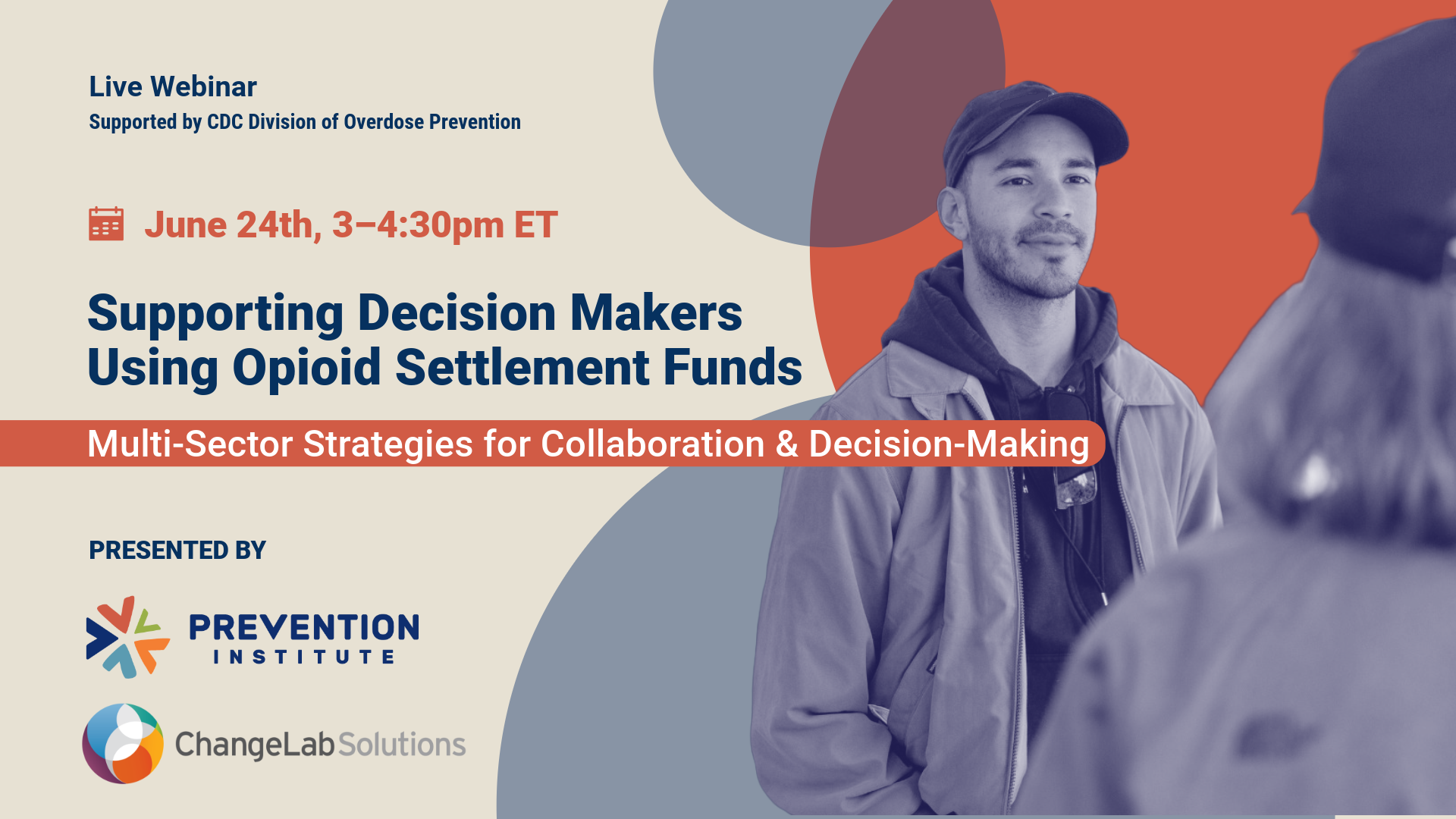Frontline Blog
Webinar recap: opioid settlement funds & collaboration strategies
August 2025

In spring 2025, Big Cities Health Coalition and Prevention Institute launched the second installment of the Supporting Decision Makers Using Opioid Settlement Funds* webinar series. The series supports state and local decision- and policymakers as they make strategic investments of opioid settlement funds.
Opioid settlement funds in the US, which by mid-2025 amounted to over $50 billion1, have the potential to make a monumental difference in the ongoing overdose epidemic. For local, state, and tribal governments, this funding provides a historic opportunity to meaningfully invest in public health interventions that prevent overdose and addictions, and ultimately, save lives.
Some decision-makers may not be used to applying a public health lens to the funding allocation process. This webinar describes the local policy process and the key role partnerships play in supporting impactful allocations of opioid settlement funds.
Multi-sector strategies for collaboration and decision-making
Listeners heard from speakers from ChangeLab Solutions, a nonpartisan nonprofit organization that uses the tools of law and policy to advance health equity, and from government partners within Pima County, Arizona, who have designed and implemented an Opioid Settlement Advisory Committee representing multiple regional jurisdictions and sectors. The speakers highlighted how multi-sector agencies that represent traditional and non-traditional sectors can serve as trusted conveners and bridge-builders, helping to engage harder-to-reach community voices and elevate their leadership in decision-making.
Christine Camilleri, Senior Planner at ChangeLab Solutions, presented on how inclusive, community-driven planning and policymaking are essential to ensuring that governments use opioid settlement funds effectively and equitably. She highlighted the importance of involving local partners, such as harm reduction organizations, health clinics, and people with living and lived experience, in every step of the policymaking and implementation processes. Camilleri also explained how several communities have taken action on directing settlement funds, using examples from Colorado, Ohio, and North Carolina to demonstrate how inclusive planning and upstream investments are helping direct settlement funds toward effective, community-informed solutions.
Jessica Breslin, Senior Attorney at ChangeLab Solutions, highlighted how municipalities can use settlement funds to facilitate collaboration among people and entities whose insights or support can help address the overdose crisis. She suggested that partnerships should include people who use drugs, individuals in recovery, community-based organizations, government agencies, advocacy groups, academics, and elected officials.
Brian Eller, Division Manager for Community Mental Health and Addiction at Pima County Health Department, Dr. Christina Bell Andrews, Executive Director of the Wassaja Carlos Montezuma Center for Native American Health, under the College of Medicine at the University of Arizona, and Linda Cifuentes, Program Implementation Specialist with the Overdose Data to Action initiative, presented on the harm reduction approaches and equity considerations that Pima County governments and organizations have taken to reduce opioid deaths and addiction in their communities, including the creation of a Regional Opioid Advisory Committee (ROSAC) to coordinate and build on prior efforts by county, city, and town officials. ROSAC members track opioid and overdose data and trends in detail to ensure that prevention resources are allocated appropriately. Several resources were shared during the presentation including:
During the panel discussion, speakers outlined several steps communities can take to develop similar approaches to the ROSAC model, including leveraging representation of people with living and lived experience on the committee and ensuring that there are mechanisms built into the funding process to connect data collection with care and resources for affected communities and individuals.
Notes
* This project was supported by the Centers for Disease Control and Prevention of the U.S. Department of Health and Human Services (HHS) as part of a financial assistance award totaling $450,000 with 100 percent funded by CDC/HHS. The contents are those of the author(s) and do not necessarily represent the official views of, nor an endorsement, by CDC/HHS, or the U.S. Government.
[1] National Academy for State Health Policy. (2024, May 17). State opioid settlement spending decisions.
